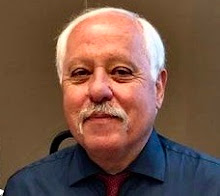When we weren’t venturing out of town, Jory and I were
usually hanging out near the old port of Genoa (above) -- known locally as Porto Antico -- or in the neighborhood of the Porta Soprana, adjacent to our berth at the Hotel Cristoforo Colombo.
Renovated in 1992 in commemoration of the voyages of Columbus, Porto Antico now features a world-class aquarium, distinctive biosphere (above) -- a giant glass ball replete with tropical plants, birds and butterflies -- a replica pirate ship and maritime museum.
Explorer Marco Polo was once incarcerated in the frescoed Pallazzo San Giorgio, built in 1260. Today, this spot -- known as the Piazza Caricamento -- hosts periodic exhibitions. A panoramic lift hoists a cylindrical viewing cabin about 200 meters into the air to absorb the full perspective of the ancient port.
The Porta Soprana (left) is what remains of an extensive defensive system of walls that encircled the city and joined the Porta dei Vacca on the north side. These “walls of Barbarossa,” built in 1158, are likely the first example of Gothic architecture in Genoa. During the French Revolution in the 18th century, the towers served as executioner's chamber, complete with fully-functioning guillotine.
On the east side of the Porta Soprana is the purported birthplace of Christopher Columbus, along with an adjacent columnar structure that housed a cloistered garden for nuns and monks from a nearby monastery.
Near the tower is the Café di Barbarossa, a lively bar with a life-size statue of Elvis greeting you at the door and some of the best people-watching in the world.
The neighborhood was peppered with eateries, bakeries, fish markets, knick-knack shops and stores of all kinds. Jory and I agreed that our two favorite restaurants were the Trattoria Alle Due Torri and La Mama's Pizzeria and Ristorante.
We also spent some time at the Barbarossa nursing our drinks and munching the free “apertivos,” while waiting for the nearby restaurants to open at 8 p.m. Though it cost five euros to access the towers, it was worth the expense for the views and photo opportunities. Plus, it was a fine stairway workout to the top (above).










